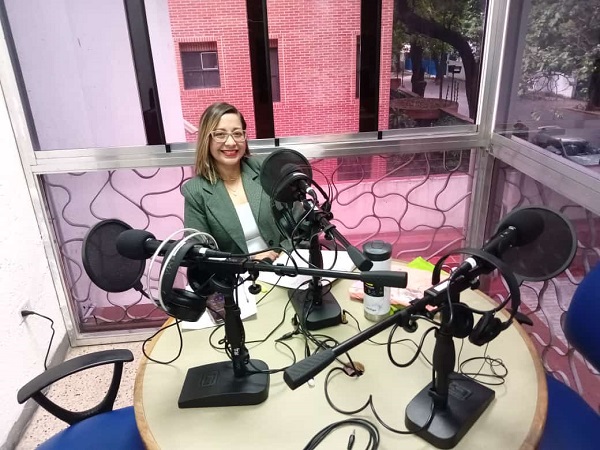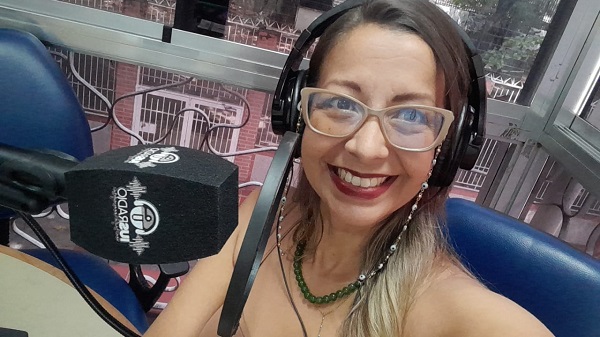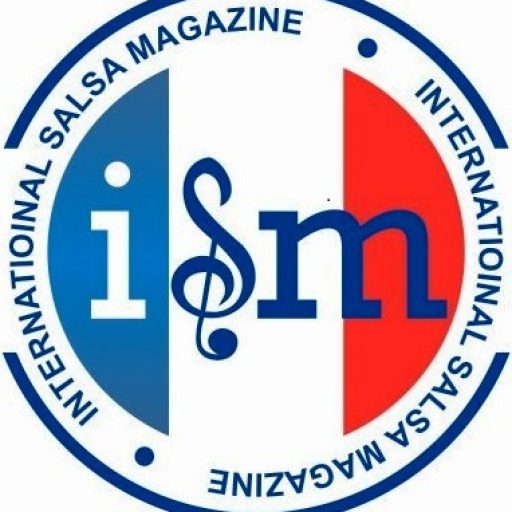Rocio Del Valle Hernandez Diaz, better known as Rocio Hernandez, Venezuelan born in the current state of La Guaira, in its capital La Guaira where all the people from Guaira or Vargas were born, at that time it was Vargas, until its current change of name of the entity.
I was born on July 20, 1986, here in my beautiful country Venezuela, I come from a working class family with strong Spanish ancestry and a little bit of Venezuelan indigenous race, which I am very proud of my roots, all Venezuelans have a mixture of European, indigenous and African, we carry it in our blood.

I am 37 years old and I am the mother of a beautiful, intelligent and magical 10 year old girl, who came into my life in 2014.
The eldest of 3 sisters, all of whom are professionals in this country, and Aunt of 1 niece and 1 nephew.
My family is a fundamental support for the development of my entire career, which I will now tell you, thanks to them my parents and sisters always move forward with work, honesty, respect, responsibility and education, values instilled in our home always.
Current resident in the state of La Guaira, specifically in the Carayaca Parish.
Administrator in Customs and International Trade graduated from the Universidad Simon Bolivar USB and Universidad Marítima del Caribe UMC, professionally my main base as a career.
It has been almost 20 years of career in this area of administration and international trade. I am a University Teacher specifically in the area of English Language in its teaching as a foreign language for 2 universities in this country currently I have worked for other institutions teaching Arancel de Aduanas, economic integration, foreign trade , also advertising and marketing, budgeting, marketing for careers such as graphic design, interior design and advertising and marketing ,additionally I got certified in Radio Voiceover in 2018 I started those studies from 2017 to 2018 in the Latin American Institute of voiceover in the Chacao municipality in the city of Caracas.
This study I did in parallel to my work in the administrative area of finance during that time, at that time. Which I started and finished satisfactorily.
The radio broadcasting certification gave us, radio production, radio technical equipment management, diction, public speaking, brand positioning and networking for that time, a very complete course, which allowed us to develop all our skills and abilities to speak into a radio microphone and the general public, this certification required us to design a real radio program, with 1 month test airing with real production, real guests, real recording and airing in a real way, on the web platform (www.radiosinprecedentes.com. ve) of the institute once a week for 1 month, at that time with my study group we designed this format The Metropolis with the help of the teacher of the subject of production is how this group of 5 people 4 women and 1 man designed the format of the program “The Metropolis”, which helped us to pass the subject, practice and experience a radio program which remained as a sketch there, to use in the future if we wanted so, at present each one went different ways inside and outside the country, and have developed different types of programs in the area where they work or simply do not practice radio broadcasting.
In my case I always dreamed of having my own radio space after getting certified because for a natural and authentic reason, from the bottom of my heart I wanted to take the course to get certified and practice radio broadcasting, even if it was for 15 minutes something short or long.

But it was not until the year 2023 that opened the door to have my radio space, after knocking on about 2 to 3 doors, through a lifelong friend who knew I was looking for the opportunity, I was offered this opportunity by the board of IUS radio an innovative radio, and offered me the schedule accepting the proposal and these coincidences and without chronicities of life and destiny, has allowed me to develop The Metropolis every week on Thursdays from 11am to 12pm. Radio space which I am going to comment below:
La Metrópolis an entertainment program transmitted every Thursday from 11am to 12pm by the platform or website www.iusradio.com.ve, in which I am the announcer and main producer of the space, this radio space is a place where we announce and recommend the best places to enjoy and visit in Greater Caracas hence its name La Metrópolis we inform about what is there, what is happening, what is happening, what is new in the most important area of our country, La Guaira, Caracas and Miranda.
This includes all the human beings that live here and their daily activities of importance and impact, human, social, musical, productive, scientific, educational, artistic, cultural, business, commercial, among others, everything that makes life here.
That is why we started in this first year with 3 original sections that I am going to talk about:
Section 1 La Tienda: Varied national and international news. Guide of places to visit and activities in the great caraca.
Section 2 El Café: Space for interviewing our guests (people who contact us or contact me or the production of the station).
Section 3 El Coctel: Space for interaction with our public, contests, gifts, with our fans, collaborators and society.
And that contact with whatsapp networks, Facebook, Instagram, X, fixed or cell phone.
Already after this year, on our own initiative and together with the production of ius radio, an innovative radio station, La Metrópolis has released 2 new sections of our own creation, which I will name below:
Section 4. Cinema City: Space of anecdotes, historical and current curiosities of the 7th art, Cinema.
Section 5 La Pasarela: Space for current trends in national and international fashion.
These sections have these original names to associate them to the city since they are allusive to the activities that we live in a City.
The musicalization is under my selection and musical taste. The musical cut is Pop and Rock in Spanish and English, Ballads in English and Spanish, Bossa Nova, Jazz, Ryth and blues, Venezuelan music, music of national talent, classics of always, Latin music only Salsa, Merengue and finally Rap and Reggaetón, keeping a close eye on the content of messages and lyrics that are not offensive and out of order for our esteemed, valued and exclusive radio audience of my program and the station. I am and we are careful in that out of respect for our listening audience and the national communication laws.
At this time the Metropolis has an approximate or regular audience of 100 to 200 people estimated, with low and high peaks.
This is how in the section in the coffee everyone’s favorite we always have our guests here we have had the opportunity to have in the booth, interviewing from film directors, actresses, singers, dancers, musicians, educators, doctors, lawyers, artisans, music DJ, motivational Coach, holistic healers, therapists, publicists, musical groups, dance groups, music academies, journalists, writers of books and stories, who make life inside and outside the country, but have a common denominator, they have a dream and make this country a better country to live, they are useful to them, their families and society.
A space to project them, and allow them to express and show what they do and their impact, this is how La Metropolis is ready to support any activity that allows human development in its maximum expression. Trusting that we will reach more public with more frontiers promoting everything positive for people for the coming years of professional work.

So after all written about me, which I do in parallel with my work as a mother, daughter, sister, and administrative and teaching professional at present, I want to tell you that the satisfaction is great to achieve all these activities in a professional manner within the radio broadcasting, which is a magical, recreational space within a work of continuous learning, it is more than a dream, It is a hobby, it is a passion, it is a love to do radio, and I feel very proud and happy to do this activity for me and for all the people of the medium and for the public and Venezuelan people who need it so much, thanks to my producer and the entire team of the station and its directors who support us in making quality content for our country, with the greatest and deepest love and respect for this activity. With gratitude always.
Thank you for this opportunity to show and express myself.

Facebook: Rocio Hernandez
Also Read: If you want to listen to Tasty Salsa tune in to Ritmo Sabor y Salsa with Nesmary J. Gómez










